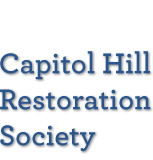Alley-Closing Position – Square 897
Posted on February 24th, 2016
Comments regarding closing of a portion of a public alley in square 897, 7th Street, NE and A Street, NE (SO-11-06993). Full text of letter sent to Mark Kazmierczak, Chair ANC 6C Transportation and Public Space Committee, February 24, 2016
Summary
CHRS contends that absent special, unique, and compelling reasons, alleys should remain open for public use and not converted to private ownership, and because there are no special, unique, or compelling reasons presented in this case, the proposed partial alley closing is not in the public interest. However, if the proposal moves forward, the applicants should be required to pay all costs for relocating the utility pole in the portion of alley that would become part of private property.
Background
Proposed alley closings must comply with Title 24 DCMR – Chapter 14:
http://www.dcregs.dc.gov/Gateway/ChapterHome.aspx?ChapterNumber=24-14
In the L’Enfant City, which includes Capitol Hill, alleys are owned by the adjacent property owners, and are not owned by the U.S. government or the D.C. government. United States v. Chesapeake & Potomac Tel. Co., 418 A.2d 114 (1980).1
The owners of 21 7th Street and 701 A Street, NE seek to partially close an alley in square 897, lot 47, 811 and 812, as shown on the attached map. We understand that all the surrounding lots would still have alley access. While 703 A Street, NE (lot 48) is land-locked, it has been for the last hundred years. If the DC Council approves of the alley closing, the resulting private property is split between abutting property owners. In this case there are three lots: 47, 811, and 812. The owners may record their portion of the former alley as a small tax lot. Alternatively, a property owner may combine their original lot with their portion of the former alley (via subdivision) into one larger lot, and in that event, the new larger lot would be the basis for computing lot occupancy for zoning purposes.2 Either way, the applicant pays taxes on the newly acquired lot.
The proposed alley closing raises several issues:
1. Comprehensive Plan. The proposed partial alley closing is inconsistent with the goals of the DC Comprehensive Plan, which states that Capitol Hill’s historic alleys should be protected:
Policy CH-1.1.7: Alleys Protect Capitol Hill’s system of historic alleys and develop plans for the use of large block interior spaces where appropriate. These plans should be developed in coordination with the affected Advisory Neighborhood Commissions, residents, and community groups. DC Comprehensive Plan, Capitol Hill Area Element, Ch. 15.
The key element for historic alleys is that they are public. This proposal to close part of an alley for private use offers no special, unique, or compelling reasons and thus would undermine the public use principle..
The regulations on alley closing state that the Director of the Office of Planning (OP) shall determine whether the proposed closing is in compliance with the District’s planning urban design objectives. 24 DCMR 1401.2(e). As far as we know, OP has not responded to this application. The National Capital Planning Commission, which has apparently signed off, is not the responsible agency.
2. Parking. An applicant states that one reason for closing this portion of the alley is to create a parking space on private property. But the zoning regulations require that the minimum parking space size on private property be 9 feet by 19 feet, and the proposed portion of alley to be closed is only 15 feet long. See 11 DCMR 2115.1.
3. Utility pole in the portion of the alley proposed to be closed.
There is a utility pole within the area of the alley sought to be closed and the applicants should be required pay all costs to relocate the utility pole. An application for closing an alley must be referred to “[T]he public utilities companies who shall determine whether the proposed closing will adversely affect their facilities.” 24 DCMR 1402.1(f). The letter from DC Department of Consumer and Regulatory Affairs (DCRA) to ANC 6C dated February 4, 2016, incorrectly states that the utility pole is not within the area of the alley proposed to be closed. As shown in the attached map and photograph, there is a utility pole in the area of the alley proposed to be closed. Utility wires on the pole connect to at least eight residences, as shown in the attached photograph. Although the application is pending, a fence has already been erected blocking off the portion of the alley sought to be closed, as shown in the attached photograph. If the alley is partially closed, and Verizon or Comcast is called to service the utility connections on the pole, they would have to ask permission from the property owner to enter private property in order to access the utility pole. For this reason, as a rule, utility poles are always located on public space, and the property owner must pay all costs for relocating the pole. We agree that this is a sound policy, and permission from a private landowner should not be necessary for utilities to serve the public.
1 For this reason, the provisions of DC Code § 9–202.08. “Disposition of property; use of money received therefrom” are not applicable to the partial closing of an alley on Capitol Hill.
2 Because square 897 is in a historic district, the Historic Preservation Review Board must approve any subdivision.


